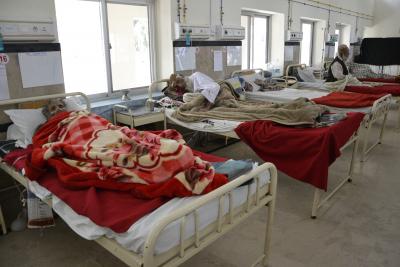New Delhi, Aug 5 : Broad measures are needed to prevent the spread of tuberculosis, or TB, in India, as the country accounts for 27 per cent of all global cases of the disease, say researchers.
Recently, the World Health Organization (WHO) changed its guidance for preventive treatment in countries with a high TB prevalence, recommending proactive drug therapy for all members of households exposed to TB by someone in the home with the pulmonary form of the disease.
This is a departure from the current national guidelines in India that only require preventive TB therapy for children under age six and people living with the human immunodeficiency virus (HIV).
However, the new WHO recommendations for broader preventive measures is conditional and not based on strong evidence, so health officials in countries such as India wanted more proof that a switch in policy was warranted.
The research team that conducted the study, published in the journal PLOS One, in India was directed by Amita Gupta from the Johns Hopkins University School of Medicine.
For their study, the researchers in India enrolled 1,051 adults in the cities of Pune and Chennai who had been exposed to someone in their household with pulmonary TB.
The 997 participants who completed the study were screened for both TB infection (presence of the bacteria) and TB disease using clinical, microbiologic and radiologic methods at enrollment, at some time between four and six months, and at 12 and 24 months.
“We found that 707 of the 997 participants, or 71 per cent, tested positive for TB infection at the start, and 20, or 2%, subsequently developed the disease during the 24-month follow-up period,” said researcher Mandar Paradkar from BJ Government Medical College (BJGMC) in Pune.
“Based on these numbers, we estimate that that 12 people per 1,000 per year will get TB disease through household contact,” Paradkar added.
This is a large enough rate to support the new WHO guidelines for stopping the spread of the bacteria, calling for all residents in households with TB present to receive therapy without needing to first be tested for infection.
The research team that the development of TB disease through household exposure was not associated with smoking, alcohol consumption, diabetes mellitus or when TB infection was detected during the study period.
To increase the effectiveness of TB prevention on a large scale, the new WHO recommendations provide options for shorter-duration treatments in addition to the previous course of the antibiotic isoniazid daily for six months, the authors said.
The alternatives include a one-month daily regimen of another antibiotic, rifapentine, plus isoniazid; three months weekly rifapentine plus isoniazid; three months daily rifampicin plus isoniazid; or four months of daily rifampicin alone, they added.
Disclaimer: This story is auto-generated from IANS service.

